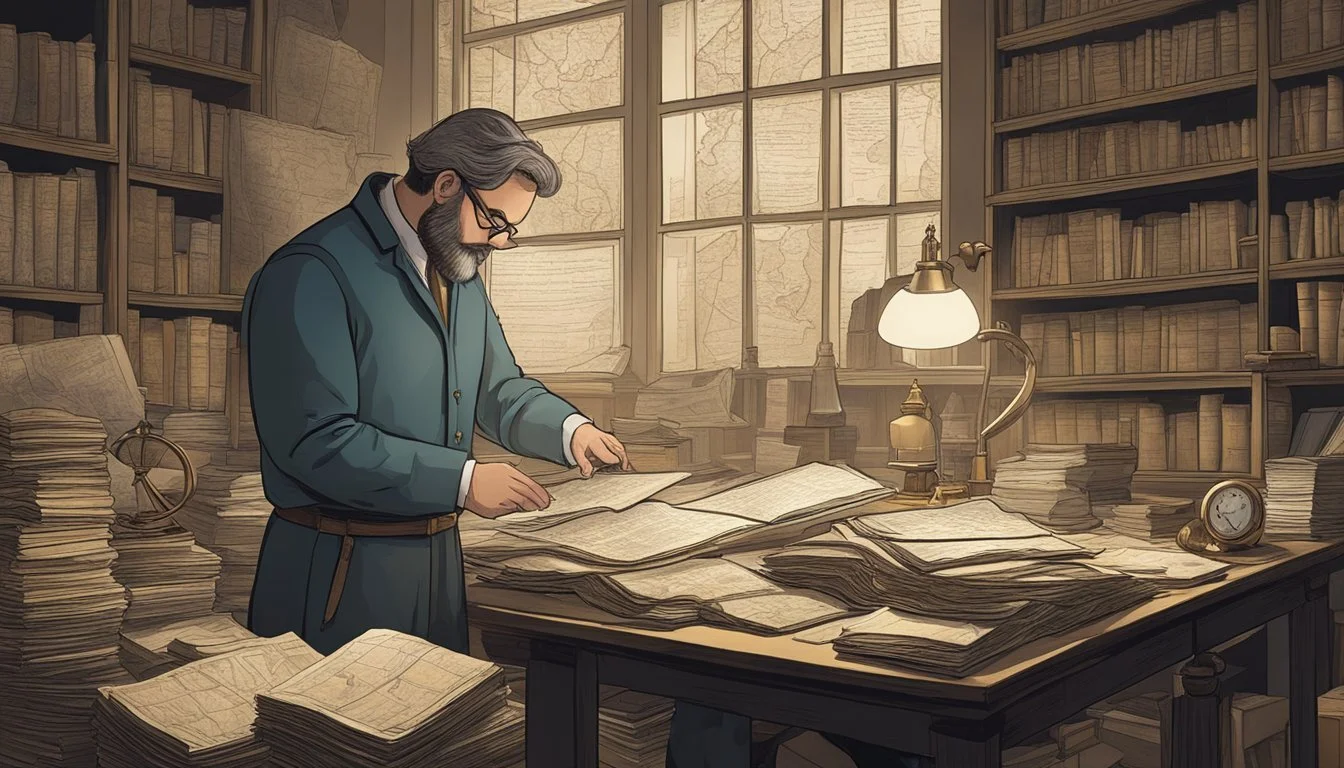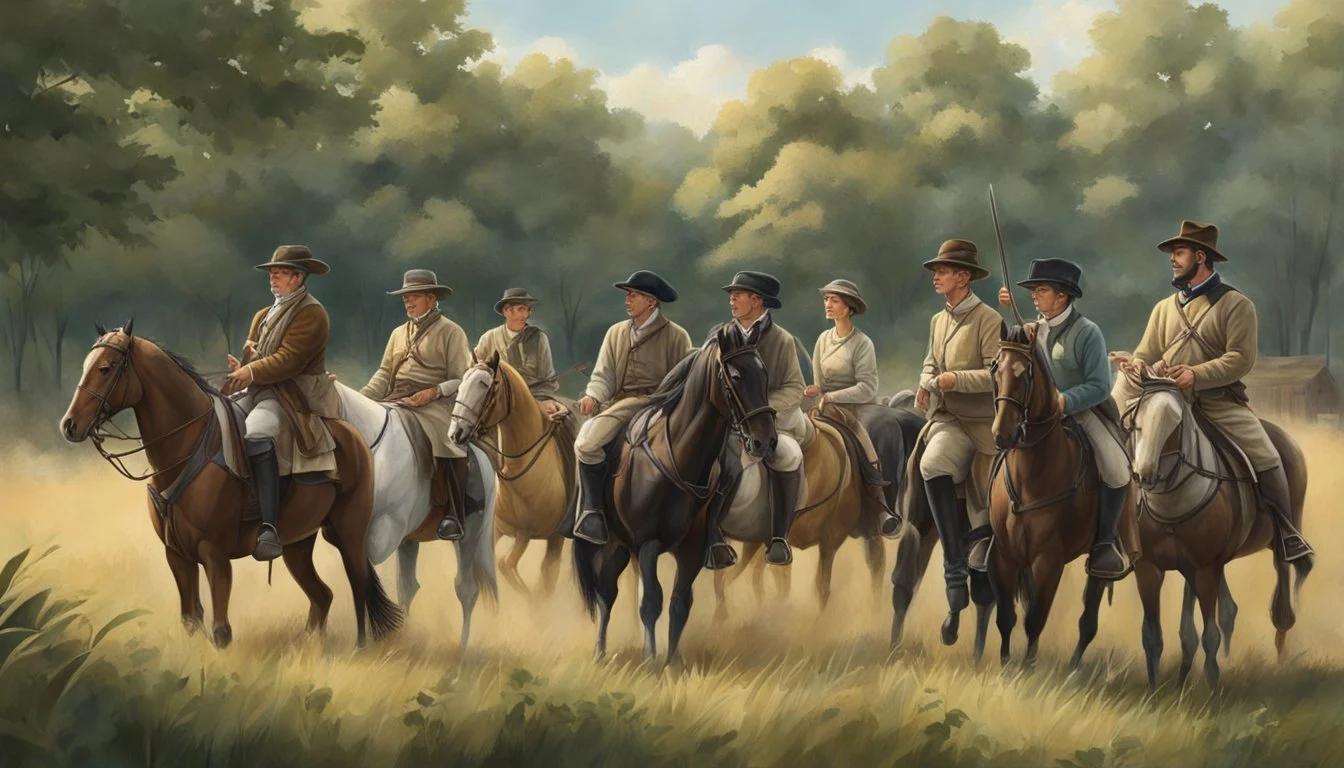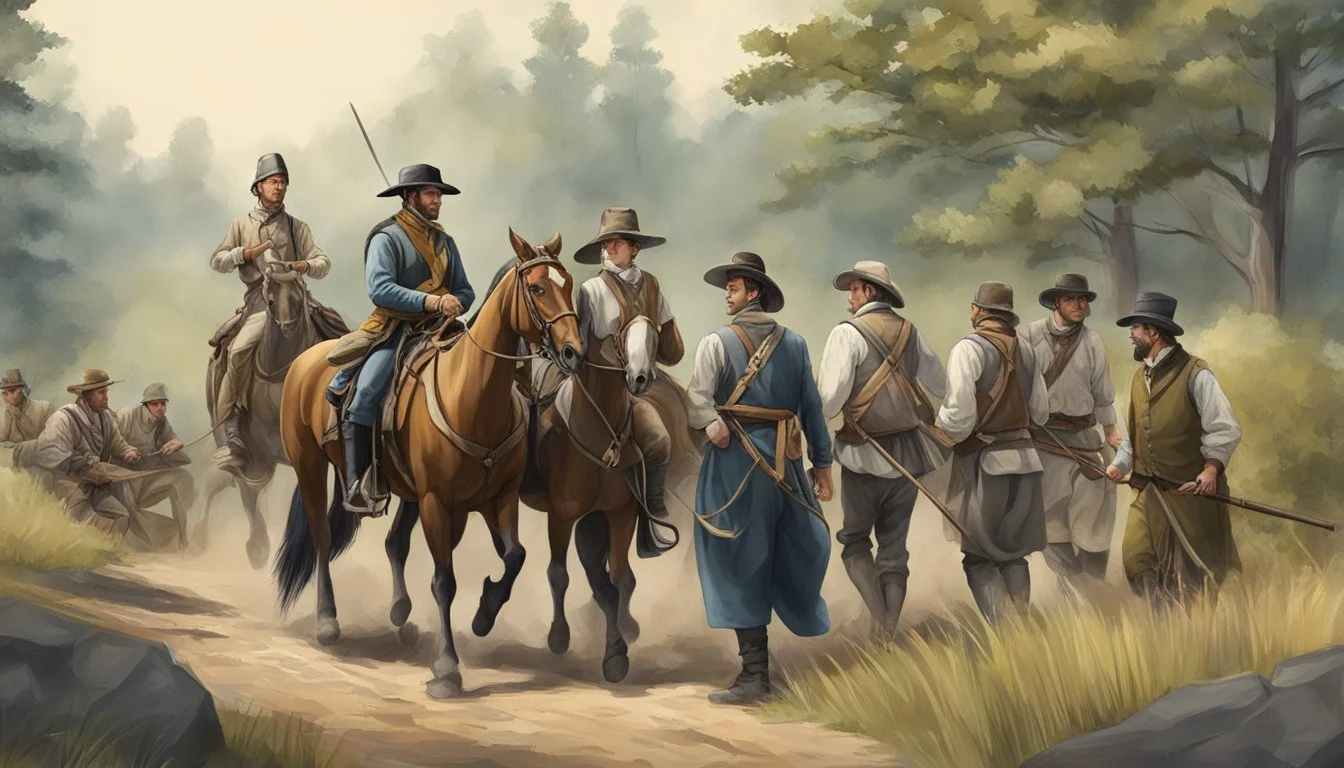Free Land for Historical Reenactors
Boosting Authentic Experiences
Imagine stepping back in time, immersing yourself in the poignant echoes of history through the captivating world of reenactment. For historical reenactors, living history is not just a hobby but a gateway to authentically experiencing the past. Free land dedicated to historical reenactment provides an unparalleled opportunity for enthusiasts to create genuine, immersive experiences.
Reenactment enthusiasts often seek authenticity to enhance their portrayal of historical events, recreating the past with precise detail. This passion for accuracy drives them to use meticulously crafted replicas and props, as well as to faithfully replicate historical settings and practices. Access to designated land enables reenactors to fully embody the lives and environments of historical figures, making the experiences more immersive for both participants and audiences.
Providing free land for these activities can foster a community where history enthusiasts can gather, exchange knowledge, and refine their skills. The presence of dedicated spaces for living history supports inclusive and diverse narratives, allowing a broader spectrum of historical events and cultures to be represented. This initiative not only enriches the practice of reenactment but also deepens public engagement with history through impactful, hands-on education.
Historical Reenactment Defined
Historical reenactment involves individuals or groups dressing in period-accurate clothing and performing activities that depict life or events from a specific historical time. This practice emphasizes authenticity and educational value while sometimes serving as an entertaining hobby.
The Pursuit of Authenticity
Reenactors strive for authenticity by meticulously researching historical events, clothing, and daily activities. They rely on sources like historical texts, paintings, and artifacts to ensure their representations are as accurate as possible.
Costumes are often handmade to match historical designs, and tools or weapons used are reproductions of actual period items. The goal is to create a realistic experience that educates the public about life in a different era.
Reenactment Vs. Living History
While both historical reenactments and living history aim to educate, there are key differences between the two. Historical reenactments typically focus on specific events, such as battles or significant historical moments, providing a chronological snapshot.
Living history, on the other hand, delves into the daily lives and customs of people from a particular period. This often includes interactive elements where visitors can engage in activities like blacksmithing, cooking, or craft-making to gain a deeper understanding of historical lifestyles. Living history settings are commonly found in historic villages or museums.
Both approaches use performance as a tool to engage audiences and bring history to life, but their methods and focuses vary to provide diverse educational experiences.
The Role of Research in Reenactment
Successful historical reenactment hinges on meticulous research, ensuring practices are rooted in historical accuracy and that gear and equipment are authentic and credible.
Developing Historical Accuracy
Accurate historical reenactment demands in-depth research. Participants often start by consulting primary sources such as letters, diaries, and official records. Secondary sources, like academic articles and history books, provide context and interpretation.
Reenactors aim to understand the daily lives and routines of people from the period they portray. This depth of knowledge helps in recreating genuine practices and customs. Consulting experts, such as historians and museum curators, adds layers of credibility.
Another vital aspect is studying the socio-political landscape of the time. Understanding the nuances of clothing, speech, and social rituals ensures each portrayal captures the era authentically.
Sourcing Authentic Gear and Equipment
Acquiring period-accurate gear and equipment is critical for an effective reenactment. Reenactors often collaborate with specialized artisans who create detailed reproductions of historical artifacts. For example, historically accurate uniforms, weaponry, and tools are crafted based on surviving examples and thorough research.
Antique shops, auctions, and estate sales are valuable sources for original items. However, reenactors must verify the authenticity of such purchases, often relying on appraisals from historians. Replicas are another significant category. High-quality replicas ensure safety while maintaining historical integrity.
Modern materials may sometimes be used if they resemble the originals closely. Details like stitching techniques, fabric types, and wear patterns are meticulously reproduced to match historical standards.
The Historical Periods and Their Reenactors
Historical reenactments span diverse eras, with dedicated enthusiasts immersing themselves in periods such as the Civil War, World War II, the Viking Age, and the Middle Ages.
Civil War to World War II
Reenactments of the Civil War are highly popular and meticulously detailed. Participants recreate battles, military drills, and civilian life, often in authentic locations. Reenactors wear period-specific uniforms and gear, reflecting the Union and Confederate sides.
Moving into the World War II era, reenactors focus on military engagements, home front activities, and the technological advancements of the time. They use restored military vehicles, genuine artifacts, and realistic props to recreate the wartime experience. Events may include battle simulations, educational displays, and commemorations.
Viking Age and the Middle Ages
The Viking Age captivates reenactors who explore the life of Norse seafarers and warriors. Activities include mock battles, crafting, and daily life demonstrations. Authenticity is crucial; reenactors use replica weapons, wear handcrafted clothing, and engage in traditional Viking skills like shipbuilding and blacksmithing.
For the Middle Ages, reenactors cover a broad spectrum from early to late medieval times. They recreate tournaments, feasts, and daily life in detailed costumes. Roles range from knights to peasants, ensuring a comprehensive portrayal. Medieval fairs and educational programs often include these reenactments, providing a vivid look at history.
Living Museums and their Contributions
Living museums play a pivotal role in bringing history to life, providing immersive, educational experiences that engage visitors of all ages. By focusing on historical authenticity, these institutions offer unique insights into past eras and cultures.
Colonial Williamsburg and Beyond
Colonial Williamsburg stands as a prime example of a successful living history museum. Located in Virginia, it meticulously recreates life in the 18th century, allowing visitors to explore a fully operational colonial town. Authentic buildings, costumed interpreters, and interactive exhibits create a vivid picture of daily life during the American Revolutionary era. This authenticity in presentation helps visitors understand the complexities of history through direct engagement.
Beyond Colonial Williamsburg, various living history museums across the United States and around the world follow similar principles. These institutions, whether they focus on medieval times, the American Civil War, or the Victorian era, strive to offer an authentic experience. By maintaining accuracy in the depiction of historical events, these museums contribute significantly to public education and cultural preservation.
Living Historians in Action
Living historians are central to the success of living museums. These passionate individuals dedicate themselves to studying and portraying historical figures and common folk with great precision. Through careful research and attention to detail, they bring historical narratives to life, creating a more engaging and impactful experience for museum visitors.
Living historians often participate in reenactments, demonstrations, and educational programs. Their roles may include everything from blacksmithing and cooking to military drills and daily chores. By interacting with visitors and sharing knowledge, living historians provide a dynamic way of understanding history, making it more relatable and accessible. This immersive approach enriches the visitor experience and fosters a deeper appreciation for the past.
The Cultural Significance of Reenactments
Historical reenactments hold great cultural value by not only providing education to the public but also generating interest through film and festival presentations. These reenactments offer an immersive experience, making history accessible and engaging.
Educating the Public and Tourists
Reenactments serve as a dynamic educational tool. Historians and educators use them to bring historical events to life. By experiencing a reenactment, the public, including tourists, gains a deeper understanding of the past beyond textbooks.
These events offer a sensory approach to learning. Participants view period clothing, hear historical dialogue, and even taste era-specific foods. This multisensory engagement helps solidify historical knowledge in memorable ways.
Tourism also benefits greatly from reenactments. Historical sites hosting reenactments see increased visitor numbers. This, in turn, boosts local economies and fosters a stronger appreciation for cultural heritage.
Reenactments in Films and Festivals
Reenactments also play a crucial role in movies and festivals. Filmmakers rely on reenactors to create authentic representations of historical events. These experienced individuals ensure accuracy in costumes, dialogues, and behaviors, making historical films more believable.
Festivals celebrating history often include reenactments as key attractions. These events become focal points for communities, encouraging participation and enhancing cultural pride. They also attract tourists and enthusiasts from various regions, promoting wider cultural exchange.
Overall, reenactments in films and festivals help keep history alive. They provide entertainment while educating audiences, thus ensuring that the stories of the past continue to be told and remembered in meaningful ways.
Community and Identity Among Reenactors
Reenactors form vibrant communities where both amateur hobbyists and professional historical interpreters play key roles. Storytelling and performance are at the core of creating genuine and immersive experiences.
Amateur Hobbyists Vs. Professional Historical Interpreters
Amateur hobbyists often engage in reenactment as a passionate pastime. They may spend considerable time and resources on costumes, known as kits, and researching historical details to enhance authenticity. Community forums and events offer these enthusiasts opportunities to connect, share knowledge, and collaborate on projects.
Professional historical interpreters, on the other hand, usually work within museums, historical sites, or educational settings. Their focus is on delivering accurate and educational performances to the public. These professionals often undergo training in historical research, performance skills, and audience engagement techniques. While their approach may be more structured, the passion for history shared by both groups fosters mutual respect and learning.
The Role of Storytelling and Performance
Storytelling and performance are integral to the reenactment community, transforming historical facts into engaging narratives. Reenactors use a variety of mediums, including theatrical performances, live demonstrations, and interactive activities to bring history to life.
Effective storytelling requires thorough research and creativity. Reenactors craft stories that not only entertain but also educate audiences, presenting historical events and daily life from multiple perspectives. This role allows them to engage viewers more deeply, making history feel relevant and alive. The use of props and replicas further enhances these experiences, adding a tangible element to the interpretative process.
Through these activities, reenactors foster a sense of identity and community among themselves and with their audiences, maintaining historical awareness in contemporary culture.
Challenges in Historical Reenactment
Historical reenactments face several challenges, from balancing modernity and historical authenticity to creating genuine sensory experiences. Each aspect requires careful consideration to ensure an enriching and educational experience.
Negotiating Modernity and Historical Themes
Historical reenactors must navigate the tension between contemporary society and historical accuracy. They aim to provide authentic experiences, yet modern-day influences can intrude.
Reenactors often employ replicas and props rather than original artifacts. This usage raises questions about the authenticity of their depictions. While it is practical, it may not fully capture the historical context.
Budget constraints pose additional challenges, as organizers must create convincing settings without unlimited resources. This limitation can lead to compromises in authenticity.
Reflexivity and historical thinking are crucial, allowing organizers to critically assess and adjust their methods to better represent the era being reenacted.
Sensory Experiences and their Authenticity
Creating sensory experiences that feel genuine is essential for any successful reenactment. This task, however, is complex. Historical reenactors strive to replicate the sounds, smells, and sights of the past, but achieving this is difficult.
For instance, cooking methods and materials used in historical periods are often replaced with modern equivalents due to safety and practicality. This replacement can diminish the sensory authenticity of the experience.
Additionally, sensory archaeology provides insights into how sensory elements were experienced historically, guiding reenactors in more accurate portrayals. Yet, it can be subjective, leading to varied interpretations.
By focusing on genuine sensory experiences, reenactors enhance the educational value of their portrayals, immersing audiences more deeply into the historical narrative.
The Future of Reenactment
Historical reenactment is evolving with advancements in technology and interdisciplinary approaches, providing deeper immersive experiences and bridging the gap between academic and public history.
Innovations in Immersive Experiences
Technological advancements are transforming reenactments by integrating virtual reality (VR), augmented reality (AR), and other digital tools. These technologies allow reenactors and audiences to experience environments with heightened realism.
Example: VR headsets allow participants to step into historically accurate simulations, enhancing experiential learning.
Another innovation includes the use of 3D-printed replicas of artifacts, offering safer and more accessible interaction with objects that may be too fragile or rare for use in traditional reenactments.
Temporary installations and living history museums are also employing interactive exhibits where visitors can engage in hands-on activities, further immersing them in past lifestyles and practices.
Crossing Academic and Public History
The line between academic history and public engagement is blurring through collaborations between historians and reenactors. This interdisciplinary approach enhances both fields: academics gain performance studies insights while reenactors benefit from rigorous historiographical research.
Joint projects often involve creating documentaries, educational programs, and public lectures that merge traditional scholarship with dramatic reenactment.
Academic conferences have started to include live reenactment sessions, enriching discussions with practical demonstrations. This not only aids in understanding historical contexts but also increases public interest, making history accessible and engaging.
Public history initiatives, such as community reenactment contests and challenges, highlight the importance of collective memory and shared heritage, underscoring the role of reenactment in education and community building.










